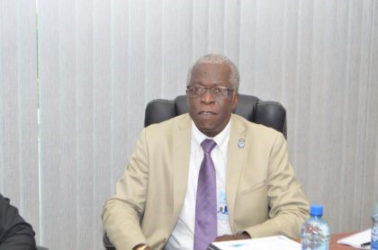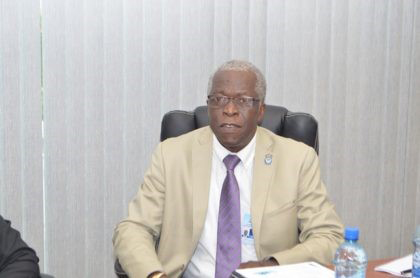Three air navigation officers attached to the Guyana Civil Aviation Authority (GCAA) have received search and rescue training.
This was disclosed last Thursday during a press conference, by Director General of the GCAA, Retired Lt. Col. Egbert Field who reiterated his commitment to enhancing the local aviation industry.
The officers, Field said, over the past ten months, would have undergone search and rescue training in the United States, Peru and Mexico, and have just recently met with representatives of the National Air Transportation Association (NATA) to identify the needs of the sector.

Calls for the establishment and implementation of a search and rescue system were echoed by some, following the most recent plane crash in Region Eight which claimed the life of ASL pilot, Captain Imran Khan.
This being said, the Director General noted that critical to any search and rescue operation is the Bell 412 helicopter which is usually needed to deploy personnel directly to crash sites. However, Stabroek News understands that currently one is not available in Guyana for that purpose.
As a result, domestic airlines usually find themselves having to utilize their own aircraft to transport search and rescue teams.
“An important element of search and rescue, which is a helicopter, in the event of a crash- I don’t know why the GDF equipment was allowed to deteriorate to the point where they don’t have a serviceable helicopter for proper search and rescue, which is the Bell 412 helicopter,” Field lamented.
Notwithstanding, Sta-broek News understands that President of NATA, Annette Arjoon-Martins has since agreed to conduct a Strengths, Weaknesses, Opportunities and Threats (SWOT) analysis and submit a report, including needs, to the regulatory agency.
To complement this, Field said the Automatic Dependent Surveillance – Broadcast (ADS-B) system, a system which allows satellite tracking of aircraft, is currently being expanded to include planes at altitudes below 24,000 feet.
As a result, the four ADS-B stations at Kaieteur, Annai, Kamarang and Port Kaituma have recently been activated with the intention of testing being conducted by experts from the Canada-headquartered Intel Can to ensure proper data transmission, by the end of the month.
Of prime importance to Guyana’s expanding aviation sector is the recruitment of persons to fill the positions of flight operation inspectors, more so now that there are plans to expand the GCAA’s presence to some of the country’s main shuttle jump-off points, including areas like Mahdia, Eteringbang and Lethem.
However, recruiting persons for the position of flight inspectors has its difficulties since the post requires persons that are “well trained and experienced” in order to be delegated tasks as a flight inspector.
“An inspector- even when we get him with experience and everything else, it takes him as much as two years for him to be fully delegated to go out there, run an inspection, write a letter, write your findings and sign it because what he signs is law, is part of regulations and unless he is properly trained, anything he puts out there can be challenged in a court of law,” Field noted.
At present, the GCAA has two flight operations inspectors, both of whom were sourced from Jamaica and are contracted to work for the authority, the Director added, before noting that efforts are underway to recruit local flight inspectors.
In the meantime, Trans Guyana Airways remains the only domestic airline operator to have received approval to resume its shuttle operations.
It was noted at the press conference that though NATA had collectively submitted manuals on behalf of the other operators, they were advised to make individual submissions to the GCAA for review.
However, Stabroek News understands that as of Tuesday afternoon, the other operators had not yet made their resubmissions to the GCAA.





